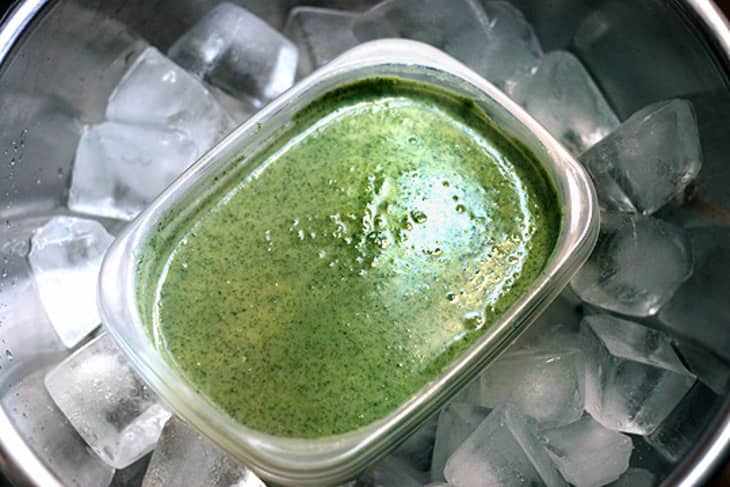Food Safety: How to Use Ice Baths to Cool Food Quickly
The food danger zone is from 140° F (60° C) to 40° F (4° C.) Cooked food should not remain in the danger zone for more than two hours; potentially dangerous foods such as raw meats/poultry, sushi, and dairy products should never be allowed to reach the danger zone temperatures. When foods reach this zone, they provide optimum breeding grounds for bacteria and other toxins that lead to food-borne illnesses. Never cool food at room temperature.
Simply adding hot food to a container and placing it in the fridge or freezer does not keep foods out of the danger zone because their environments aren’t cold enough to quickly move food temperatures through the danger zone within the two-hour limit. Also, the temperature of the food will not be evenly safe; the food closer to the edges of the container will be out of the danger zone, but the food in the center of the container will remain in the danger zone and breed bacteria.
In order to cool food rapidly and evenly, you must place the food containers in an ice bath. It’s quite a simple and non-messy process. Simply fill your sink (or a large bowl) with ice and cold water, and place your containers in the ice bath. The container should be level with the ice. Stir the food every 10 to 15 minutes to distribute the heat to the cold areas so the food cools down evenly. As the ice melts, drain the water a little bit and add more ice. Monitor the food with a thermometer.
Once your food has reached 40° F (4° C) it is now safe to put it in the fridge or freezer.
